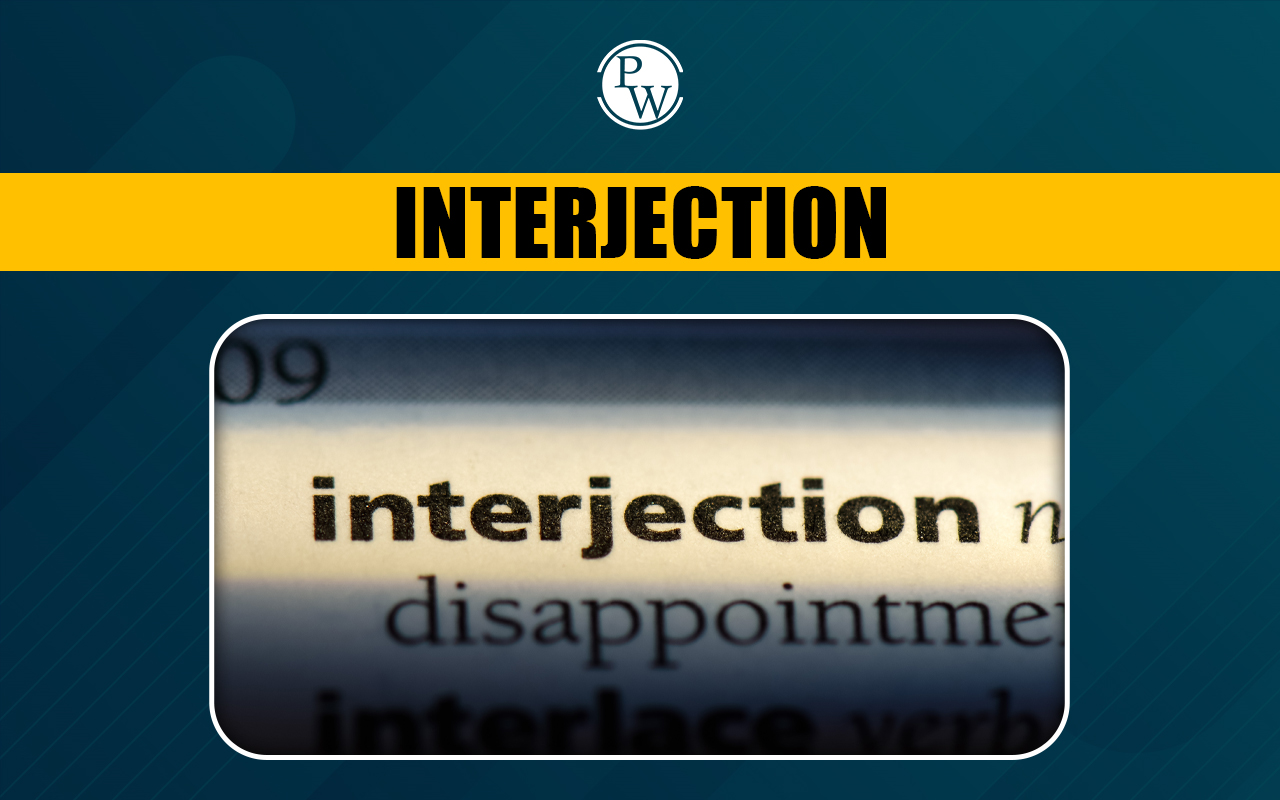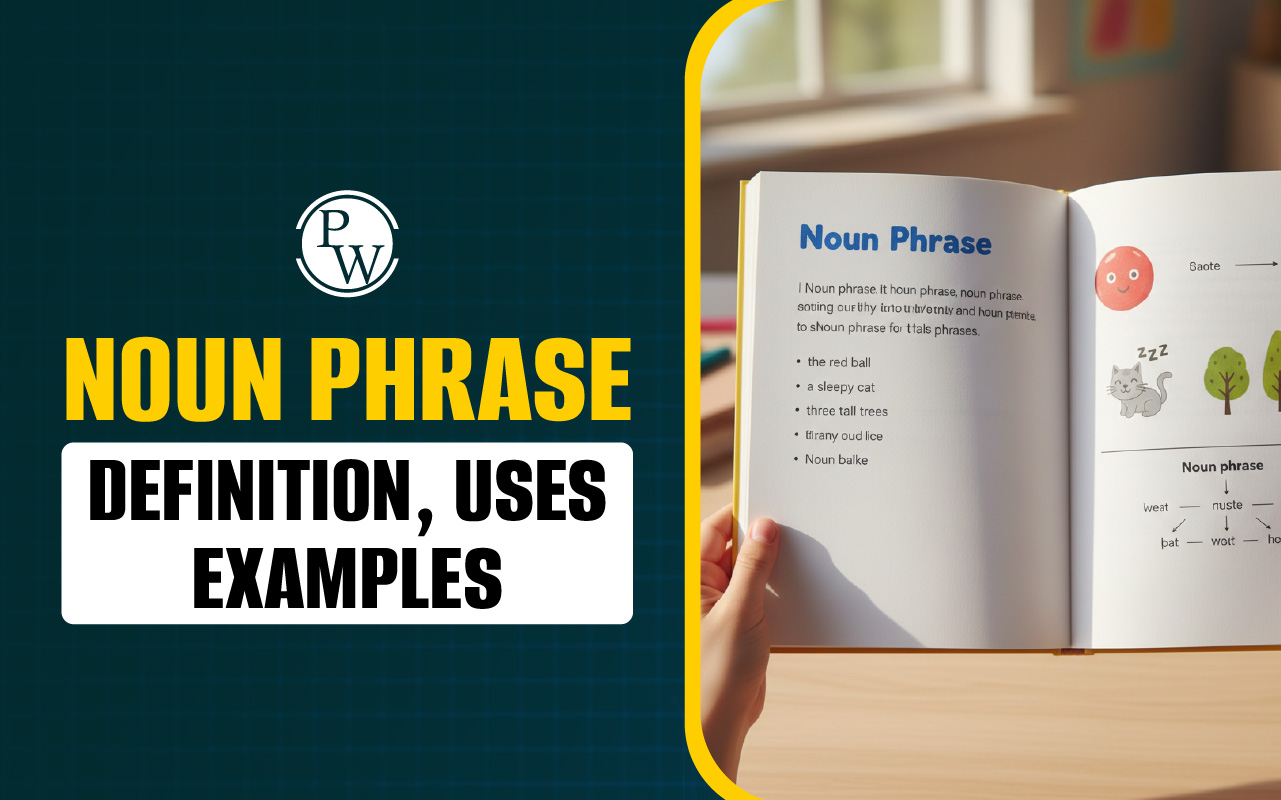
NCERT Solutions for Class 5 Maths Chapter 11: The NCERT Solutions for Class 5 Maths Chapter 11 - "Area and its Boundary" provide students with a clear understanding of how to measure the area and perimeter of various shapes.
These solutions are designed to help students grasp the concept of area as the amount of space inside a shape and the boundary as the length around a shape. Through practical examples and exercises, students learn to calculate the area and perimeter of rectangles, squares, and other polygons. The solutions, prepared by experts, align with the CBSE syllabus, ensuring that students have a thorough understanding of these fundamental concepts in geometry. This foundation is important for their progress in higher mathematics.NCERT Solutions for Class 5 Maths Chapter 11 PDF
NCERT Solutions for Class 5 Maths Chapter 11 - "Area and its Boundary" PDF is a very helpful resource for students. It provides clear explanations and step-by-step answers to help students learn how to measure the area and perimeter of different shapes. These solutions based on the CBSE syllabus and include practical examples to make learning fun and easy. By using this PDF, students can improve their problem-solving skills and get a better understanding of geometric concepts, which will help them do well in their exams. The solutions are easy to follow, making it a great tool for learning and practicing maths.NCERT Solutions for Class 5 Maths Chapter 11 PDF
NCERT Solutions for Class 5 Maths Chapter 11 Area and its Boundary
PAGE: 146Whose Slice is Bigger?
Parth and Gini bought aam pappad (dried mango slice) from a shop. Their pieces looked like these.
 Both could not make out whose piece was bigger.
Both could not make out whose piece was bigger.
1. Suggest some ways to find out whose piece is bigger. Discuss.
Solution:
The length of piece A is 6 cm. So 6 squares of side 1 cm can be arranged along its length. The width of piece A is 5 cm. So 5 squares can be arranged along its width. Altogether 30 squares can be arranged on it.
So, the area of piece A = 6 cm × 5 cm = 30 square cm
Altogether 30 squares can be arranged on it.
So, the area of piece A = 6 cm × 5 cm = 30 square cm
NCERT Solutions for Class 5 Maths
2. Altogether how many squares can be arranged on it? ________
Solution:
303. So the area of piece A = ________ square cm
So the area of piece A = 30 square cm4. In the same way find the area of piece B.
Solution:
Now, the area of piece B = 11 cm × 3 cm = 33 square cm5. Who had the bigger piece? How much bigger?
Solution:
So, the area of piece B is bigger than the area of piece A. Difference in area of piece A and piece B = 33 − 30 = 3 square cm So, piece B is 3 square cm bigger than piece A.Cover with stamps:
This stamp has an area of 4 square cm. Guess how many such stamps will cover this big rectangle.
 Solution:
Solution:
 Check your guess:
Check your guess:
a) Measure the yellow rectangle. It is ________ cm long.
Solution:
14cmb) How many stamps can be placed along its length? ________
Solution:
7 stampsc) How wide is the rectangle? ________ cm
Solution:
8cmd) How many stamps can be placed along its width? ________
Solution:
4 stampse) How many stamps are needed to cover the rectangle? ________
Solution:
28 stampsf) How close was your earlier guess? Discuss.
Solution:
It was pretty close.g) What is the area of the rectangle? ________ Square cm
Solution:
Area of rectangle = 7 × 4 = 28 square cmh) What is the perimeter of the rectangle? ________ cm
Solution:
Length of the rectangle = 14 cm Breadth of the rectangle = 8 cm A rectangle has 2 lengths and 2 breadths. So, perimeter of the rectangle = Sum of all its sides = Length of its boundary = 14 cm + 8 cm + 14 cm + 8 cm = 44 cm The perimeter of rectangle is 44 cm.Practice time:
a) Arbaz plans to tile his kitchen floor with green square tiles. Each side of the tile is 10 cm. His kitchen is 220 cm in length and 180 cm wide. How many tiles will he need?
 Solution:
Given length of kitchen = 220 cm
Width of the kitchen = 180 cm
Each side of tile = 10 cm
Area of floor = length × width
= 220 × 180 = 39600 square cm
Area of a tile = side × side
= 10 × 10 = 100 square cm
Number of tiles = area of floor/ area of a tile
= 39600/100
= 396 tile.
Solution:
Given length of kitchen = 220 cm
Width of the kitchen = 180 cm
Each side of tile = 10 cm
Area of floor = length × width
= 220 × 180 = 39600 square cm
Area of a tile = side × side
= 10 × 10 = 100 square cm
Number of tiles = area of floor/ area of a tile
= 39600/100
= 396 tile.
b) The fencing of a square garden is 20 m in length. How long is one side of the garden?
Solution:
Given perimeter of garden = 20 m which has to be fenced. Length of one side = perimeter/4 = 20/5 = 5m.c) A thin wire 20 centimeters long is formed into a rectangle. If the width of this rectangle is 4 centimeters, what is its length?
 Solution:
Solution:
d) A square carrom board has a perimeter of 320 cm. How much is its area?
 Solution:
Given perimeter of carrom board is 320 cm
We know that perimeter of square = 4 × side
Side = perimeter/4
Side = 320/4
= 80 cm
We know that area of square = side × side
= 80 × 80
= 6400 square cm
Solution:
Given perimeter of carrom board is 320 cm
We know that perimeter of square = 4 × side
Side = perimeter/4
Side = 320/4
= 80 cm
We know that area of square = side × side
= 80 × 80
= 6400 square cm
e) How many tiles like the triangle given here will fit in the white design? Area of design = ________ square cm
 Solution:
6 triangular tiles will fit in to the given white design.
Now, area of 1 such triangular tile = 12 square cm
Area of 6 triangular tiles that make this design = 6 × 12 = 3 square cm
Area of design = 3 square cm
Solution:
6 triangular tiles will fit in to the given white design.
Now, area of 1 such triangular tile = 12 square cm
Area of 6 triangular tiles that make this design = 6 × 12 = 3 square cm
Area of design = 3 square cm
 f) Sanya, Aarushi, Manav and Kabir made greeting cards. Complete the table for their cards:
f) Sanya, Aarushi, Manav and Kabir made greeting cards. Complete the table for their cards:
 Solution:
Perimeter of Sanya’s card = Sum of all its sides = 10 + 8 + 10 + 8 = 36 cm
Length of Manav’s card = 11 cm
Perimeter of his card = 44 cm
We have to find the width of Manav’s card.
Perimeter of card = Sum of all its sides = 11 + 11 + sum of 2 other sides = 22 + sum of 2 other sides
Now, sum of two other sides = 44 − 22 = 22 cm
The two other sides of the greeting cards are width.
So, width of Manav’s card = 22 ÷ 2 = 11 cm
Width of Aarushi’s card = 8 cm
Area of the card = 80 square cm
Now, we have to find length of the card.
Area of card = Length of card × 8 cm = 80 square cm
So, on dividing the area of card by its width, we can get its length.
Therefore, length of Aarushi’s card = 80 ÷ 8 = 10 cm
Solution:
Perimeter of Sanya’s card = Sum of all its sides = 10 + 8 + 10 + 8 = 36 cm
Length of Manav’s card = 11 cm
Perimeter of his card = 44 cm
We have to find the width of Manav’s card.
Perimeter of card = Sum of all its sides = 11 + 11 + sum of 2 other sides = 22 + sum of 2 other sides
Now, sum of two other sides = 44 − 22 = 22 cm
The two other sides of the greeting cards are width.
So, width of Manav’s card = 22 ÷ 2 = 11 cm
Width of Aarushi’s card = 8 cm
Area of the card = 80 square cm
Now, we have to find length of the card.
Area of card = Length of card × 8 cm = 80 square cm
So, on dividing the area of card by its width, we can get its length.
Therefore, length of Aarushi’s card = 80 ÷ 8 = 10 cm
 My belt is longest:
My belt is longest:
Take a thick paper sheet of length 14 cm and width 9 cm. You can also use an old postcard.
1. What is its area? What is its perimeter?
Solution:
Length of paper sheet = 14 cm Breadth of paper sheet = 9 cm Area of the sheet = 14 cm × 9 cm = 126 square cm Perimeter of the sheet = 14 cm + 9 cm + 14 cm + 9 cm = 46 cm2. Now cut strips of equal sizes out of it. Using tape join the strips, end to end, to make a belt.
 How long is your belt? _____
How long is your belt? _____
Solution:
84 cm3. What is its perimeter _____?
Solution:
90 cm4. Whose belt is the longest in the class? _____
Solution:
Strips of the least width will make the longest belt in the class.Discuss:
1. Why did some of your friends get longer belts than others?
Solution:
This is because they made belts from thinner strips than others.2. Is the area of your belt the same as the area of the postcard? Why or why not?
Solution:
Area of the belt of 3 cm wide strip = length × breadth = 3 × 42 = 126 square cm Yes, the area of my belt is the same as the area of the post card. This is because every area of the post card is used for making the belt.3. What will you do to get a longer belt next time?
Solution:
I can get a longer belt by making thinner belts next time.Share the land:
Nasreena is a farmer who wants to divide her land equally among her three children — Chumki, Jhumri and Imran. She wants to divide the land so that each piece of land has one tree. Her land looks like this.
 1. Can you divide the land equally? Show how you will divide it. Remember each person has to get a tree. Colour each person’s piece of land differently
1. Can you divide the land equally? Show how you will divide it. Remember each person has to get a tree. Colour each person’s piece of land differently
Solution:
Total number of boxes = 90 Hence, one person’s share is = 90/3 = 30 boxes. The division can be done as shown in the given figure:2. If each square on this page is equal to 1 square metre of land, how much land will each of her children get? ________ Square m
Solution:
30 square meter.3. Chumki, Jhumri and Imran need wire to make a fence.

Who will need the longest wire for fencing? _________
Solution:
Perimeter of Chumki’s land = 9 + 2 + 3 + 2 + 6 + 4 = 26 m Perimeter of Jhumri’s land = 6 + 3 + 2 + 3 + 4 + 6 = 24 m Perimeter of Imraan’s land = 8 + 5 + 3 + 2 + 5 + 3 = 26 m So it is clear that Chumki and Imraan need longest wire of fencing.4. How much wire in all will the three need? ___________
Solution:
Total length of wire = 26 m + 24 m + 26 m = 76 m. Solution:
Solution:
 B. Draw a square of 9 square cm. Write A on it. Draw another square with double the side. Write B on it
B. Draw a square of 9 square cm. Write A on it. Draw another square with double the side. Write B on it
Solution:
 Answer these —
Answer these —
1. The perimeter of square A is __________ cm.
Solution:
12 cm2. The side of square B is __________ cm.
Solution:
6 cm3. The area of square B is __________ square cm.
Solution:
36 cm4. The area of square B is __________ times the area of square A.
Solution:
4 times5. The perimeter of square B is __________ cm.
Solution:
24 cm6. The perimeter of square B is __________ times the perimeter of square A.
Solution:
2 timesSave the Birds:
There are two beautiful lakes near a village. People come for boating and picnics in both the lakes. The village Panchayat is worried that with the noise of the boats the birds will stop coming. The Panchayat wants motor boats in only one lake. The other lake will be saved for the birds to make their nests.
 a) How many cm is the length of the boundary of Lake A in the drawing? _____________ (use thread to find out)
a) How many cm is the length of the boundary of Lake A in the drawing? _____________ (use thread to find out)
Solution:
When we measure the boundary of Lake A with the help of thread, it comes out to be around 30 cm.b) What is the length of the boundary of Lake B in the drawing?
Solution:
When we measure the boundary of Lake B with the help of thread, it comes out to be around 25 cm.c) How many kilometers long is the actual boundary of Lake A?
Solution:
Here, the scale is 1 cm = 1 km So, length of the actual boundary of lake A = 30 kmd) How many kilometers long is the actual boundary of Lake B?
Solution:
Here, the scale is 1 cm = 1 km So, length of the actual boundary of lake B = 25 kme) A longer boundary around the lake will help more birds to lay their eggs. So which lake should be kept for birds? Which lake should be used for boats?
Solution:
The boundary around the lake A is more than the boundary around the lake B. So, Lake A should be kept for birds and Lake B should be used for boats.f) Find the area of Lake B on the drawing in square cm. What is its actual area in square km?
Solution:
Lake B has 15 fully filled squares and 11 half-filled or more than half – filled squares. Area of 15 fully filled squares = 15 × 15 = 225 square cm We consider the area of every single half – filled or more than half – filled square as 1 square cm Thus, the area of 11 such squares = 11 × 11 = 121 square cm So, total area of lake B = 225 + 121 = 346 square cm We are given 1 cm on drawing = 1 km on ground Therefore, 346 square cm on drawing = 346 kmKing’s Story:
The King was very happy with carpenters Cheggu and Anar. They had made a very big and beautiful bed for him. So as gifts the king wanted to give some land to Cheggu, and some gold to Anar. King’s Story Cheggu was happy. He took 100 metres of wire and tried to make different rectangles. He made a 10 m × 40 m rectangle. Its area was 400 square metres. So he next made a 30 m × 20 m rectangle.
 1. What is its area? Is it more than the first rectangle?
1. What is its area? Is it more than the first rectangle?
Solution:
Area of rectangle = 30 × 20 = 600 square m. Yes, it is more than the first rectangle.2. What other rectangles can he make with 100 metres of wire? Discuss which of these rectangles will have the biggest area.
Solution:
Following rectangles are possible: 5 × 45 = 225 square m 15 × 35 = 525 square m 25 × 25 = 625 square m The square will have the biggest area.3. Cheggu’s wife asked him to make a circle with the wire. She knew it had an area of 800 square metres. Why did Cheggu not choose a rectangle? Explain.
Solution:
Because none of the rectangles will have area 0f 800 square meter.4. So Anar also tried many different ways to make a boundary for 800 square metres of land. He made rectangles A, B and C of different sizes. Find out the length of the boundary of each. How much gold wire will he get for these rectangles?
 i. Gold wire for A = _________ metres
i. Gold wire for A = _________ metres
Solution:
As the area of rectangle A is shown as 40 m × 20 m. So, the length of rectangle = 40 m Width of rectangle = 20 m Gold wire for A = 40 + 20 + 40 + 20 = 120 metresii. Gold wire for B = _________ metres
Solution:
As the area of rectangle B is shown as 80 m ×10 m. So, the length of rectangle = 80 m Width of rectangle = 10 m Gold wire for B = 80 + 10 + 80 + 10 = 180 metresiii. Gold wire for C = ____________ metres
Solution:
As the area of rectangle C is shown as 800 m × 1 m. So, the length of rectangle = 800 m width of rectangle = 1 m Gold wire for C = 800 + 1 + 800 + 1 = 1602 metresiv. So he will get ____________ metres of gold wire!!
Solution:
As the area of rectangle D is shown as 8000 m × 0.1 m. So, the length of rectangle = 8000 m Width of rectangle = 0.1 m Gold wire for C = 8000 + 0.1 + 8000 + 0.1 = 16000 + 0.2 = 16000.2 metres. So, he will get 16000.2 metres of gold wire.Benefits of NCERT Solutions for Class 5 Maths Chapter 11 Area and its Boundary
- Clear explanations: The NCERT Solutions provide clear and concise explanations for each concept covered in Chapter 11 - "Area and its Boundary." This clarity helps students understand the topics better.
- Practice questions: The solutions include a variety of practice questions that cover different aspects of finding the area and perimeter of shapes. This helps students reinforce their learning and build confidence in solving mathematical problems.
- Coverage of CBSE syllabus: The solutions are designed according to the CBSE syllabus, ensuring that students are well-prepared for their exams and can excel in their studies.
- Improves problem-solving skills: By solving the practice questions provided in the solutions, students can improve their problem-solving skills and develop a deeper understanding of mathematical concepts related to area and perimeter.
- Enhances exam preparation: Using the NCERT Solutions, students can effectively prepare for their exams by practicing a wide range of questions and mastering the concepts covered in Chapter 11. This can lead to better performance in exams.
NCERT Solutions for Class 5 Maths Chapter 11 FAQs
How can I calculate the area of different shapes like rectangles, squares, and triangles?
What is the perimeter of a shape, and how is it calculated?
What are some common units used to measure area and perimeter?
How can I determine the boundary or perimeter of irregular shapes?
How does understanding area and perimeter relate to other mathematical concepts?












